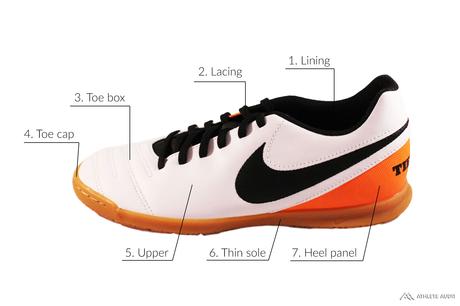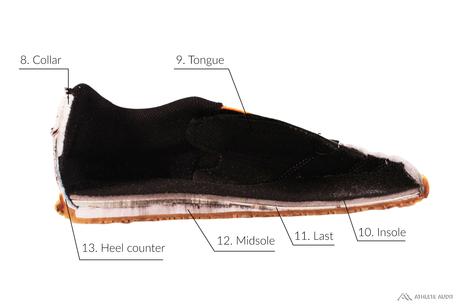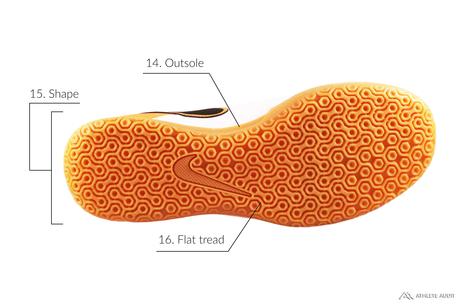Parts of an Indoor Soccer Shoe



- Lining – A sock-like fabric in the inside of the shoe helps to improve comfort
- Lacing – Traditional laces allow the most adjustment in fit
- Toe box – A flexible toe box allows for efficient running and dynamic movements
- Toe cap – Improves the durability of the toe and helps with the full motion of a gait
- Upper – Lightweight uppers are usually made of leather, kangaroo leather, or synthetic leather for superior feel
- Thin sole – Helps to increase how much you feel the ground underneath you
- Heel panel – The piece of fabric that covers the heel area of the shoe
- Collar – A padded collar helps to improve comfort and fit
- Tongue – A thin tongue with minimal padding helps to improve feel for the ball
- Insole – The footbed of the shoe, provides comfort and support. Some may be removable
- Last – Lies underneath the insole, determines the shape of the shoe
- Midsole – Located between the insole and outsole, provides cushioning throughout the foot. Relatively thin
- Heel counter – A tough plastic insert in the back of the shoe provides structural support for the heel
- Outsole – The rubber outsole on the bottom of the shoe that provides traction on smooth indoor courts
- Shape – Determined by the last, the shape affects how the shoe fits in the heel, arch, and forefoot
- Flat tread – Provides superior traction and optimal feel on indoor courts

